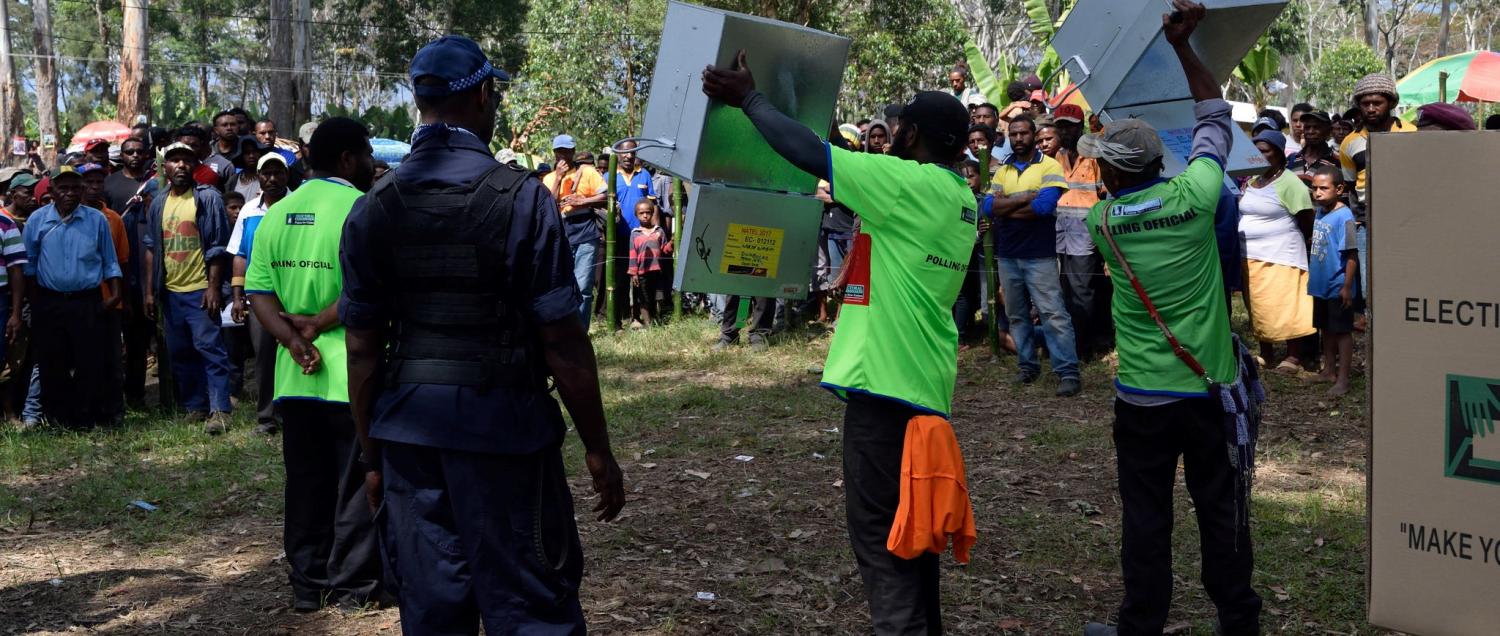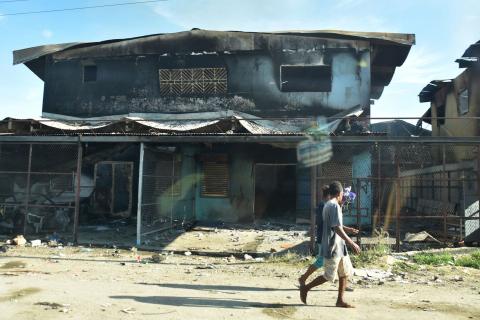This is the fourth of several articles for The Interpreter by Lowy Institute Nonresident Fellow and former long-term Papua New Guinea correspondent, Sean Dorney who was in PNG for the elections as part of the Commonwealth's PNG Election Observer Mission. You can find part one here, part two here, and part three here.
During the annual Pacific Islands Forum Leaders Meeting in Apia earlier this month, the Commonwealth Secretary-General Patricia Scotland presented PNG Prime Minister Peter O'Neill with the Commonwealth Observer Group's report on the election.
The report recommends that the PNG government accept outside help to conduct an 'urgent review and lessons learned process' to help ensure there are fewer problems at the next elections in 2022. The Commonwealth Secretariat is offering to provide 'strong support' to this 'lessons learned' process, in collaboration with Papua New Guinea's other development partners.
Among a host of issues identified as 'significant challenges' by the Group was the large number of names missing from the electoral roll. As the Group's Chair and former New Zealand Governor-General Sir Anand Satyanand writes in his letter to Scotland at the head of the report, 'An accurate and credible electoral roll is at the heart of a credible election process.'
The Group expressed its sadness at 'reports of election related violence during the counting period in the Highlands region which resulted in the loss of lives, including some members of the Police'. It also lamented that 'not a single woman was elected to the Parliament in the 2017 election'.
The report's 38 recommendations include that the PNG Electoral Commission should be provided with timely and adequate funding; the Commission should strengthen its working relationship with the Integrity of Political Parties and Candidates Commission to foster greater trust in elections; the Government should consider temporary special measures to ensure some representation by women in the Parliament; and that the thousands of security personnel engaged in the election be given the opportunity to vote before being deployed.
The Group did find some positive aspects, such as 'the high voter turnout and enthusiasm by the people to participate in their democratic process'. Now that the figures are finally becoming available, the extent of that high voter turnout can be calculated – it throws up some fascinating and disturbing results.
The Australian economist Paul Flanagan (who writes a regular blog on PNG issues) has already raised questions about the turnout (145%) in Tari in the Hela Province in the Highlands. This seat, the first to be declared, was won by James Marape from Peter O'Neill's People's National Congress party.
I have been able to get final figures for valid votes in 80 of the 89 Open seats in the PNG Parliament – Tari was not the only seat where more people voted than were on the copies of the Electoral Commission's electoral roll for Open electorates provided to election observers before the poll.
There was a 115% turnout in Imbonggu in the Southern Highlands, while it was 103% in O'Neill's seat of Ialibu-Pangia. Okapa in the Eastern Highlands and Chauve in Chimbu both recorded a perfect 100% turnout. The Highlands province of Chimbu had an average turnout of 97%. The six Chimbu seats were remarkably similar: Chuave at 100%; Gumine at 94%; Karimui Nomane at 99%; Kerowagi at 98%; Kundiawa at 94%; and Sinasina Yonggamugl at 97%.
Throughout the Highlands, the Open seat turnout averaged 94%. Voting is not compulsory in PNG.
Outside of the Highlands, where five seats recorded more votes than there were voters on the roll, there was only one other seat where that occured. This was Nawe, in the Morobe Province, where there were 33,813 voters on the roll but 44,080 valid votes were counted; a 130% turnout.
My calculations for the respective turnouts in the four regions are: Highlands 94%; Momase 79%; Papua 68%; and the New Guinea Islands 64%. Of the provinces, East New Britain had the lowest turnout at 56%, while the National Capital District was not much higher at 60%.
There are obviously big problems in the Highlands, where tribal and cultural issues continue to have a major impact on how elections are run. The Commonwealth observers who went to the Highlands reported that bloc voting was a major feature at almost every polling station they visited. They said that in many polling stations voters were given multiple ballot papers by polling officials, often at the voter's insistence that they were authorised to vote for absent family members. In Goroka, they witnessed polling officials at the end of the day (after voting was finished) crossing names off the roll to match the number of votes that had been cast earlier. And in the Jiwaka Province, they saw voters who had several fingers inked, indicating that they had voted multiple times.
Not all of PNG's electoral problems can be solved before 2022, but a thorough examination of lessons from the 2017 elections is definitely the best way to start.


